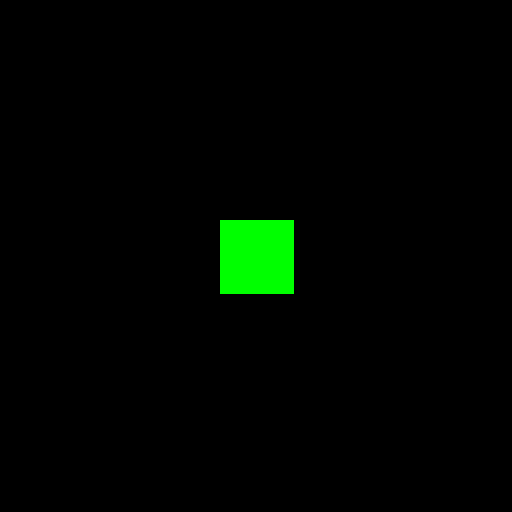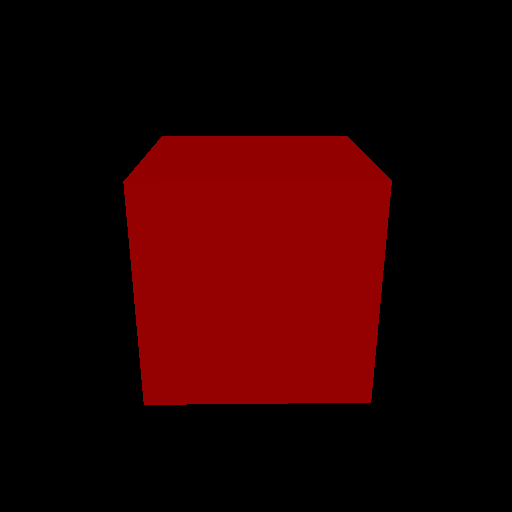
Research
Security News
Lazarus Strikes npm Again with New Wave of Malicious Packages
The Socket Research Team has discovered six new malicious npm packages linked to North Korea’s Lazarus Group, designed to steal credentials and deploy backdoors.
node-canvas-webgl
Advanced tools
Integration of node-canvas and headless-gl.
const fs = require('fs');
const THREE = require('three');
const GIFEncoder = require('gifencoder');
const {createCanvas} = require('../lib');
const width = 512,
height = 512;
const scene = new THREE.Scene();
const camera = new THREE.PerspectiveCamera(75, width / height, 0.1, 1000);
const canvas = createCanvas(width, height);
const renderer = new THREE.WebGLRenderer({
canvas,
});
const geometry = new THREE.BoxGeometry(1, 1, 1);
const material = new THREE.MeshBasicMaterial({color: 0x00ff00});
const cube = new THREE.Mesh(geometry, material);
scene.add(cube);
camera.position.z = 5;
const encoder = new GIFEncoder(width, height);
encoder.createReadStream().pipe(fs.createWriteStream('./snapshot/threejs-cube.gif'));
encoder.start();
encoder.setRepeat(0); // 0 for repeat, -1 for no-repeat
encoder.setDelay(16); // frame delay in ms
encoder.setQuality(10); // image quality. 10 is default.
let idx = 0;
function update() {
cube.rotation.x += 0.01;
cube.rotation.y += 0.01;
renderer.render(scene, camera);
if(idx > 0) {
encoder.addFrame(canvas.__ctx__);
console.log(`add frame ${idx}`);
}
idx++;
if(idx < 500) {
setTimeout(update, 16);
}
}
update();

const fs = require('fs');
const GIFEncoder = require('gifencoder');
const clay = require('claygl');
const {createCanvas} = require('../lib');
const width = 512,
height = 512;
const canvas = createCanvas(width, height);
const encoder = new GIFEncoder(width, height);
let idx = 0;
// polyfill
global.document = {
createElement() {
return createCanvas(300, 150);
},
};
clay.application.create(canvas, {
width,
height,
init(app) {
// Create camera
this._camera = app.createCamera([0, 2, 5], [0, 0, 0]);
// Create a RED cube
this._cube = app.createCube({
color: [1, 0, 0],
});
// Create light
this._mainLight = app.createDirectionalLight([-1, -1, -1]);
// app.createAmbientLight('#fff', 1.0);
encoder.createReadStream().pipe(fs.createWriteStream('./snapshot/claygl-cube.gif'));
encoder.start();
encoder.setRepeat(0); // 0 for repeat, -1 for no-repeat
encoder.setDelay(16); // frame delay in ms
encoder.setQuality(10); // image quality. 10 is default.
},
loop(app) {
this._cube.rotation.rotateY(16 / 1000);
if(idx > 0) {
encoder.addFrame(canvas.__ctx__);
console.log(`add frame ${idx}`);
}
idx++;
if(idx > 197) {
process.exit(-1);
}
},
});

const fs = require('fs');
const BABYLON = require('babylonjs');
const {createCanvas} = require('../lib');
// polyfill
global.HTMLElement = function () {};
global.window = {
setTimeout,
addEventListener() {},
};
global.navigator = {};
global.document = {
createElement() {
return createCanvas(300, 150);
},
addEventListener() {},
};
// Get the canvas DOM element
const canvas = createCanvas(512, 512);
// Load the 3D engine
const engine = new BABYLON.Engine(canvas, true, {preserveDrawingBuffer: true, stencil: true});
// CreateScene function that creates and return the scene
const createScene = function () {
// Create a basic BJS Scene object
const scene = new BABYLON.Scene(engine);
// Create a FreeCamera, and set its position to {x: 0, y: 5, z: -10}
const camera = new BABYLON.FreeCamera('camera1', new BABYLON.Vector3(0, 5, -10), scene);
// Target the camera to scene origin
camera.setTarget(BABYLON.Vector3.Zero());
// Attach the camera to the canvas
camera.attachControl(canvas, false);
// Create a basic light, aiming 0, 1, 0 - meaning, to the sky
const light = new BABYLON.HemisphericLight('light1', new BABYLON.Vector3(0, 1, 0), scene);
// Create a built-in "sphere" shape; its constructor takes 6 params: name, segment, diameter, scene, updatable, sideOrientation
const sphere = BABYLON.Mesh.CreateSphere('sphere1', 16, 2, scene, false, BABYLON.Mesh.FRONTSIDE);
// Move the sphere upward 1/2 of its height
sphere.position.y = 1;
// Create a built-in "ground" shape; its constructor takes 6 params : name, width, height, subdivision, scene, updatable
const ground = BABYLON.Mesh.CreateGround('ground1', 6, 6, 2, scene, false);
// Return the created scene
return scene;
};
// call the createScene function
const scene = createScene();
scene.render();
fs.writeFileSync('./snapshot/snap-babylon.png', canvas.toBuffer());

const fs = require('fs');
const {Renderer, Figure2D, Mesh2D} = require('@mesh.js/core');
const {createCanvas, loadImage} = require('../lib');
const width = 512,
height = 512;
const canvas = createCanvas(width, height);
const renderer = new Renderer(canvas, {contextType: 'webgl'});
const f = new Figure2D();
f.rect(0, 0, 512, 512);
const m = new Mesh2D(f, canvas);
m.setFill({color: '#ddd'});
const url = 'https://p0.ssl.qhimg.com/t01a72262146b87165f.png';
loadImage(url).then((image) => {
const texture = renderer.createTexture(image);
m.setTexture(texture);
renderer.drawMeshes([m]);
fs.writeFileSync('./snapshot/snap-spritejs.png', canvas.toBuffer());
});

FAQs
Integration of node-canvas and headless-gl.
The npm package node-canvas-webgl receives a total of 614 weekly downloads. As such, node-canvas-webgl popularity was classified as not popular.
We found that node-canvas-webgl demonstrated a not healthy version release cadence and project activity because the last version was released a year ago. It has 2 open source maintainers collaborating on the project.
Did you know?

Socket for GitHub automatically highlights issues in each pull request and monitors the health of all your open source dependencies. Discover the contents of your packages and block harmful activity before you install or update your dependencies.

Research
Security News
The Socket Research Team has discovered six new malicious npm packages linked to North Korea’s Lazarus Group, designed to steal credentials and deploy backdoors.

Security News
Socket CEO Feross Aboukhadijeh discusses the open web, open source security, and how Socket tackles software supply chain attacks on The Pair Program podcast.

Security News
Opengrep continues building momentum with the alpha release of its Playground tool, demonstrating the project's rapid evolution just two months after its initial launch.